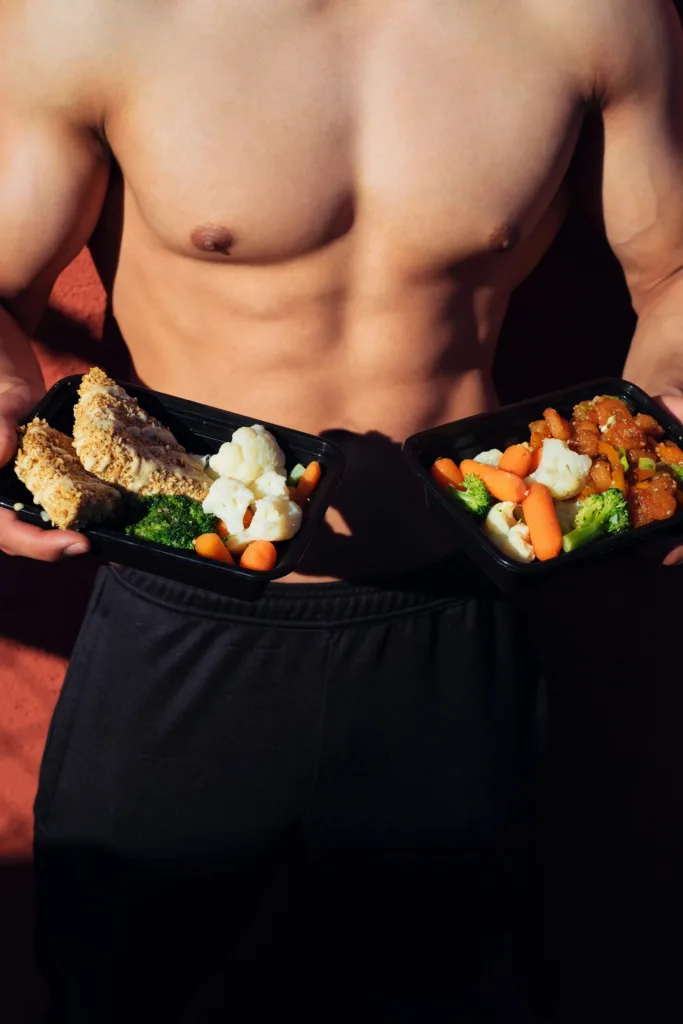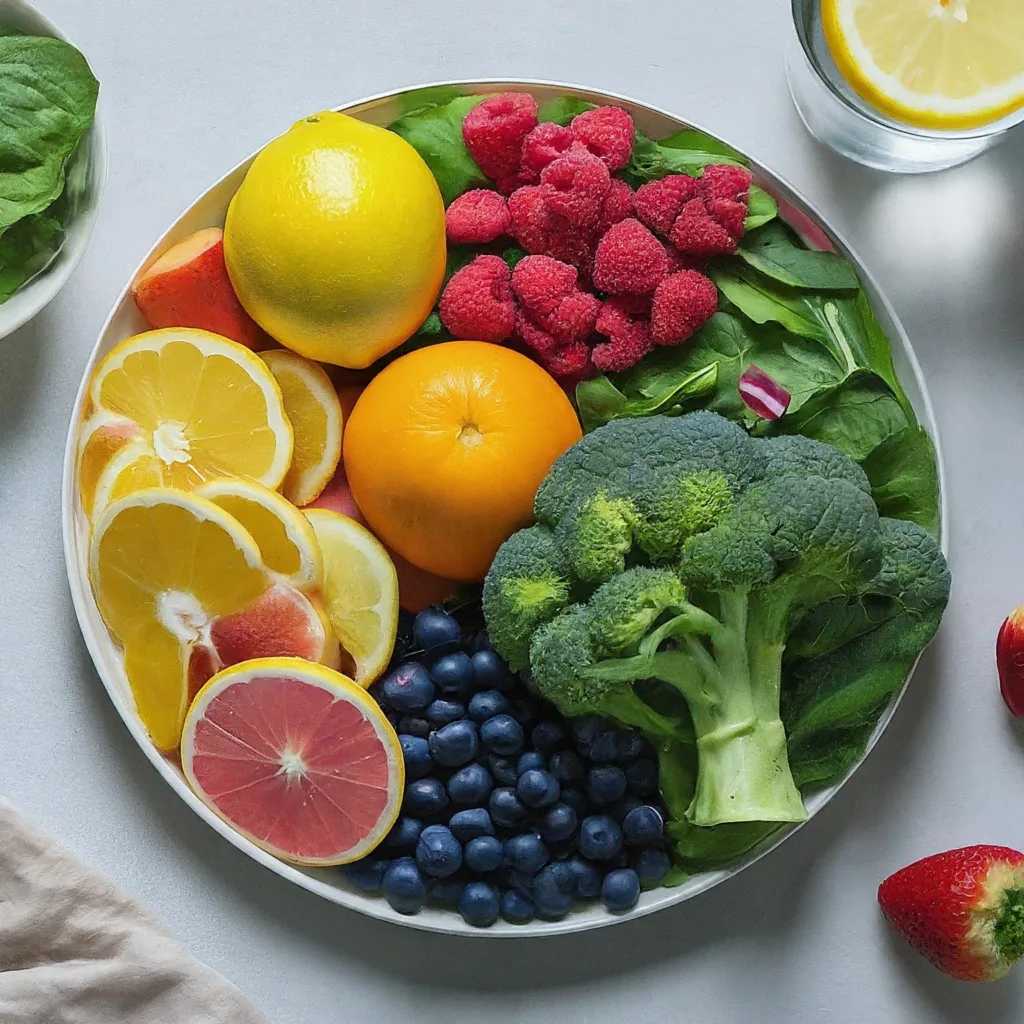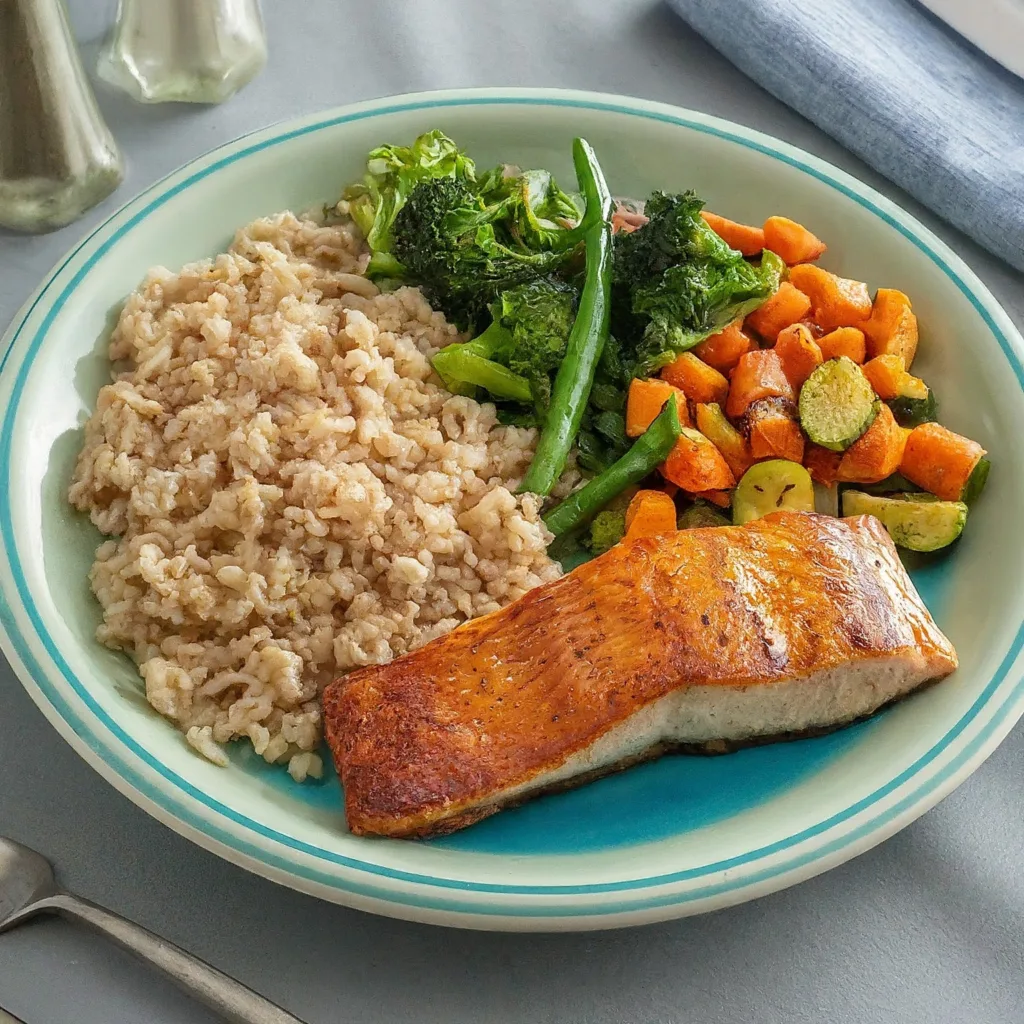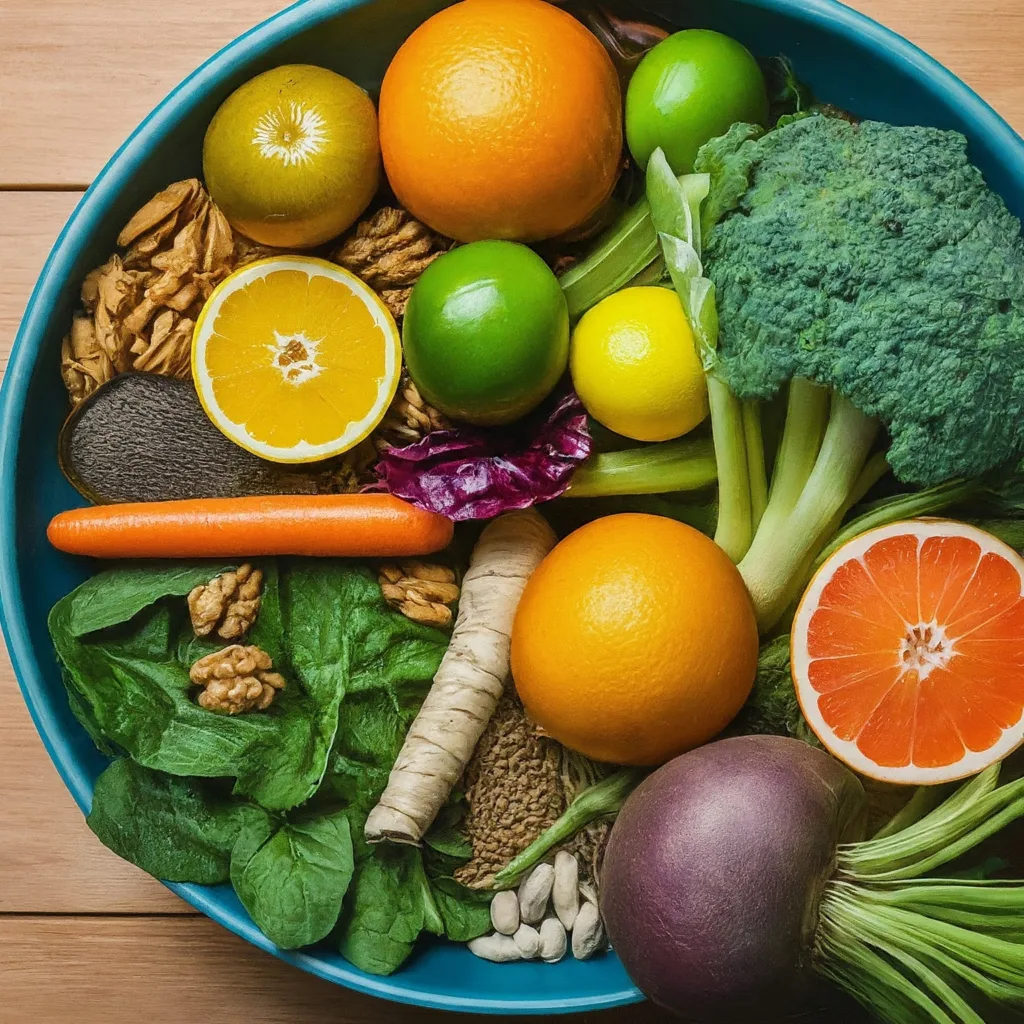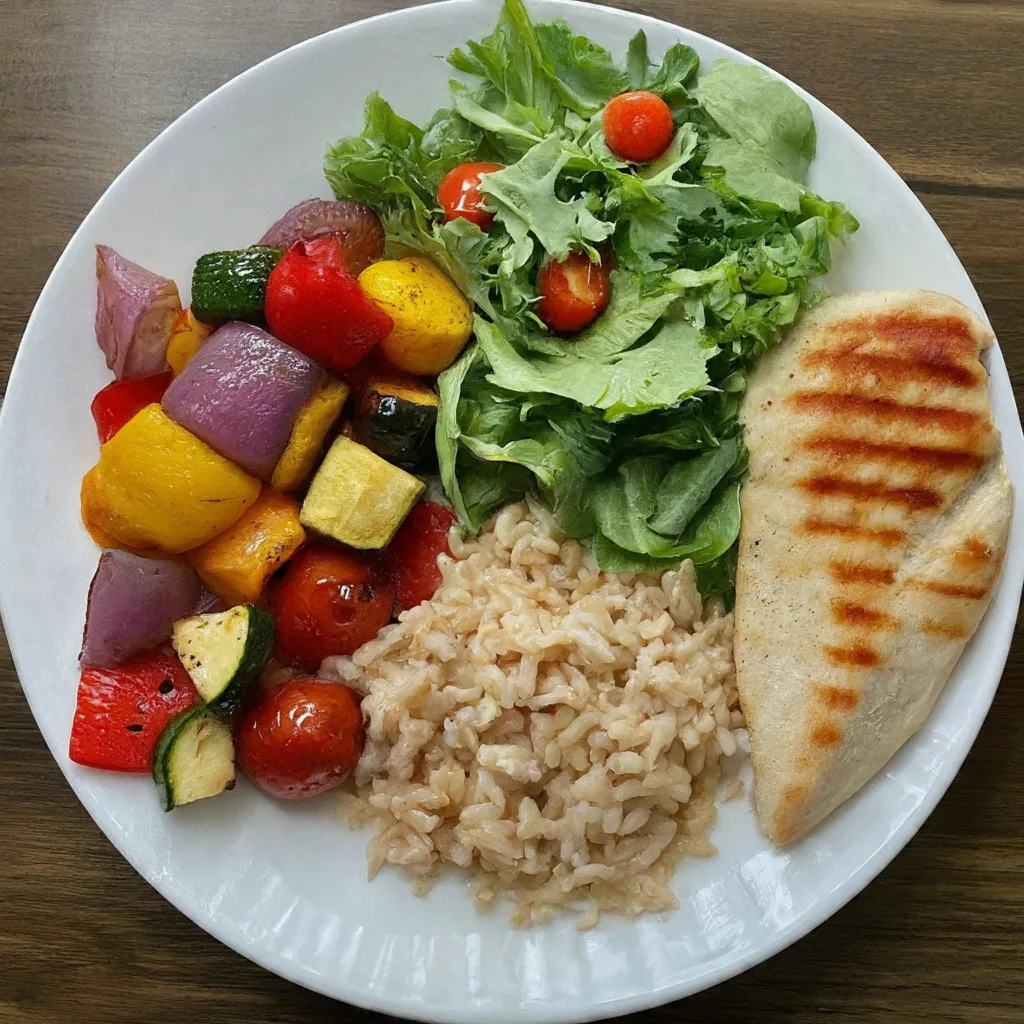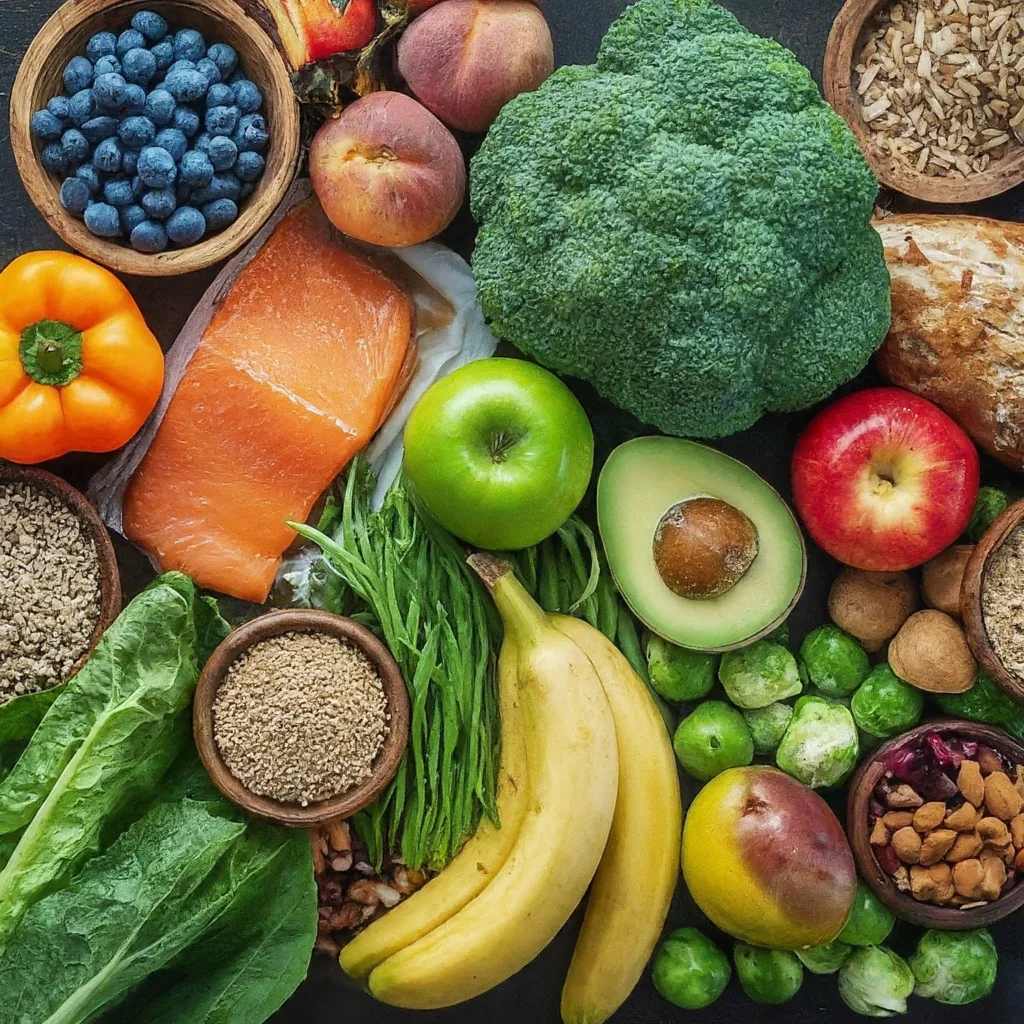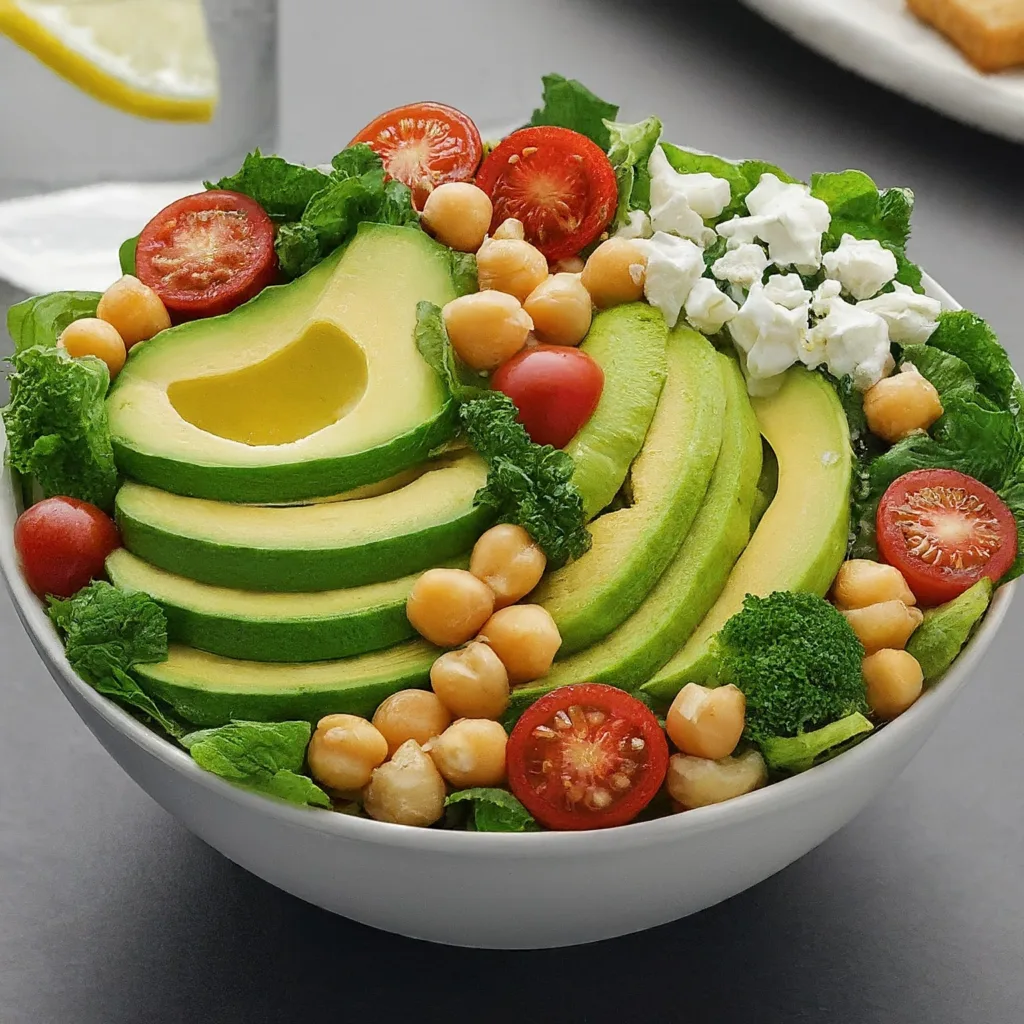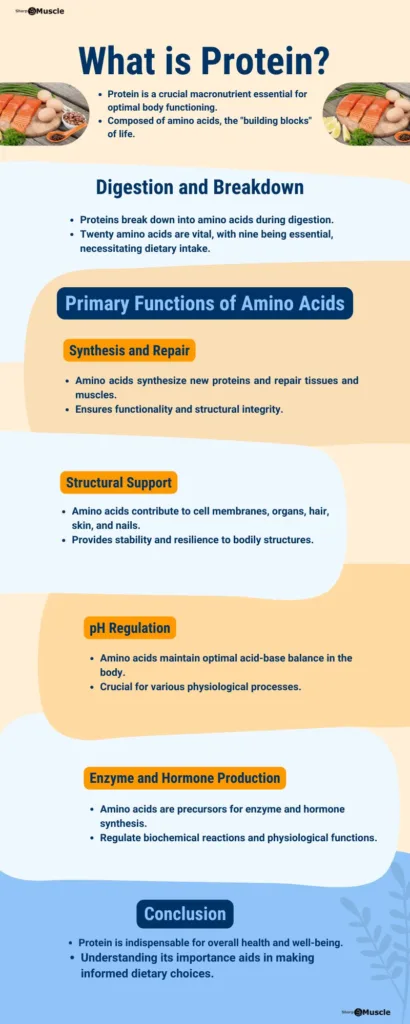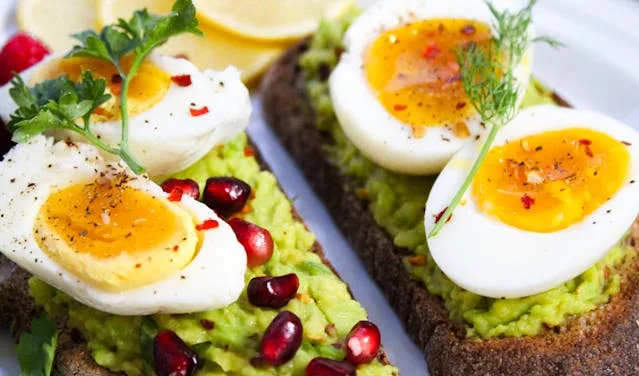The weight loss journey – oh, the twists and turns we face. If you’re seeking a structured path to help shed those pesky pounds, a 1600-calorie diet plan could be your guiding star.
There are so many diet trends and contradictory advice out there, it’s easy to get overwhelmed and confused. We’ve condensed the essentials of a 1600-calorie diet plan into a thorough guide to achieving your fitness goals.
Whether you’re looking to kickstart your weight or fat loss journey or simply seeking a sustainable approach to healthier eating habits, this guide promises actionable steps and valuable insights to help you achieve your goals. Do not allow the apprehension of omitting your ideal physique to hinder you any longer. Instead, delve into our seasoned guidance and take charge of your nutrition and well-being.
In This Article
Understanding the Basics of a 1600-Calorie Diet Plan
At its core, a 1600-calorie diet plan is all about creating a calorie deficit. This means you’ll consume fewer calories than your body burns daily, leading to gradual and sustainable weight loss. While 1600 calories is a good starting point for many, it’s important to customize this number based on your individual needs and goals.
While the desire for rapid results is understandable, remember that healthy and sustainable weight loss is a marathon, not a sprint. Studies show that rapid weight loss often leads to rebound weight gain and can negatively impact metabolism. 1 2
Aiming for a loss of 1–2 pounds per week is considered safe and will help you keep the weight off in the long run. 3 4 5
Take the journey and focus on creating lasting lifestyle changes rather than seeking quick fixes.
Calculating Your Caloric Needs for Fat Loss
Don’t blindly follow the 1600-calorie guideline! Success depends on understanding your body’s unique requirements. Here’s how to find your target calorie intake for effective fat loss:
Step 1: Calculate Your Basal Metabolic Rate (BMR)
- This is the number of calories your body burns at rest to sustain basic functions.
- Use an online calculator (and provide a link to one as an example).
- Input your:
- Age
- Gender
- Height
- Weight
Step 2: Factor in Your Activity Level
- Sedentary: BMR x 1.2
- Lightly Active (exercise 1-3 days/week): BMR x 1.375
- Moderately Active (exercise 3-5 days/week): BMR x 1.55
- Very Active (exercise 6-7 days/week): BMR x 1.725
- Extremely Active (very hard exercise & physical job): BMR x 1.9
Step 3: Create Your Calorie Deficit
- Aim for 0.5-2 lbs of weight loss per week. A safe and sustainable deficit is usually around 500 calories below your maintenance level.
Example:
- Your BMR is 1700.
- You’re moderately active, so your maintenance calories are about 2550 (1700 x 1.55).
- For gradual fat loss, aim for 2050 calories daily (2550 – 500).
Macronutrient Ratio for Fat Loss
- Protein: 45-50% of total calories (helps preserve muscle)
- Carbohydrates: 30-35% of total calories (fuel for workouts)
- Fats: 15-20% of total calories (important for health)
Macro Breakdown for Optimal Results: Your Key to Success
“Macros,” short for macronutrients, are the cornerstone of a healthy diet. Studies consistently show that finding the right macro balance can support weight/fat loss, boost energy levels, protect muscle mass, and promote overall well-being. 6 7
Here’s a breakdown of each macronutrient’s role:
- Protein: The Muscle Preserver
- During weight loss, prioritizing protein is essential for preserving muscle mass. Studies show this supports a healthy metabolism and helps maintain a toned physique. 8 9
- Aim to include a serving of protein with each meal and snack.
- Excellent sources: lean meats, poultry, fish, eggs, tofu, beans, lentils, Greek yogurt.
- Carbohydrates: Your Energy Source
- Carbs provide fuel for your workouts and daily life.
- Opt for complex carbohydrates for sustained energy – think whole grains, fruits, vegetables, and starchy vegetables like sweet potatoes. Research indicates these choices promote stable blood sugar levels compared to refined options. 10 11
- Limit refined carbohydrates (white bread, sugary cereals, etc.) as they offer less nutritional value.
- Fats: Essential for Health and Satisfaction
Choosing Nutrient-Dense Foods: The Key to Sustainable Weight Loss
Rather than focusing solely on calories, prioritize foods bursting with vitamins, minerals, and fiber. Studies show these nutrient-dense options promote feelings of fullness (satiety), support a healthy gut, and offer numerous disease-fighting benefits. 14 15
Incorporating Whole Grains for Sustained Energy:
- Brown rice
- Quinoa
- Oats
- Whole-wheat bread, pasta, or crackers
- Barley
- Buckwheat
- Sprouted grains
- Air-popped popcorn
Prioritizing Lean Protein Sources for Muscle Preservation:
- Chicken breast (skinless)
- Turkey (ground or breast)
- White fish (cod, tilapia, halibut, etc.)
- Salmon, tuna, or other fatty fish
- Eggs
- Tofu, tempeh, or edamame
- Beans (kidney, black, pinto, etc.)
- Lentils
- Low-fat Greek yogurt
Opting for Healthy Fats to Support Brain Function and Heart Health:
- Avocados
- Nuts (almonds, walnuts, cashews, etc.)
- Seeds (chia, flax, pumpkin, sunflower, etc.)
- Olive oil
- Fatty fish (salmon, sardines, mackerel)
- Nut butters (almond, peanut – choose natural varieties)
Bottom line
Finding the perfect macro balance is individual. Experiment with different ratios and track your progress to see what feels best for your body and goals. Portion control is still important even with nutrient-dense foods. Use measuring cups and spoons to ensure you’re consuming appropriate amounts that align with your calorie goals.
Meal Planning Strategies: Your Path to Effortless Success
Planning your meals is the key to staying on track and reaching your goals. Here’s how to make it simple:
Creating Balanced Meals:
- Think of it as a formula: Protein + Complex Carbs + Healthy Fats + Lots of Veggies = Balanced Meal
- Example: Grilled chicken breast + brown rice + roasted broccoli + a drizzle of olive oil
Dedicate a few hours on the weekend (Sundays are ideal) to prep a week’s worth of lunches or dinners. Cook large batches of versatile dishes like soups, stews, roasted vegetables, and whole grains. Then, divvy them up into containers for easy grab-and-go meals throughout the busy week.
Don’t let dining out derail your progress! Scope out restaurant menus online beforehand to make informed choices. Opt for grilled instead of fried options, ask for dressings and sauces on the side, and don’t be afraid to customize your order. Request a veggie-filled omelet for breakfast or a side salad in place of fries.
Remember, planning puts you in the driver’s seat! A little forethought goes a long way in achieving your weight loss goals.
1600-Calorie Diet Plan for Success
| Meal Plan Days | Meals timing |
|---|---|
| Monday – Sunday: | Breakfast (8-9 am); Mid-morning (10-11 am); Lunch (1-2 pm); Mid-evening (4-5 pm); Meal-5 (8-9 pm) |
| Water intake time | Water intake |
|---|---|
| Upon wake-up | 500ml |
| 30 minutes of before and after any meal | 250ml |
| During workouts | 250ml (drink sip) |
Monday, Thursday & Friday 1600-Calorie Meal Plan
Breakfast (8-9am)
- 1 Whole Grain Toast
- 2 tablespoons Greek Yogurt
- 1/2 cup Mixed Berries (Strawberries, Blueberries, Raspberries)
- 1 tablespoon Chia Seeds
- Sprinkle of Cinnamon
- 1 Multivitamin
Mid-morning (10-11am)
- 1/2 Avocado on Whole Grain Crackers
- 1 Hard-boiled Egg
- Small Handful of Cherry Tomatoes
Lunch (1-2pm)
- Grilled Veggie Wrap (Whole Grain Tortilla filled with Grilled Vegetables like Bell Peppers, Zucchini, Onions, and Spinach)
- 1 small Apple
- 1 cup Baby Carrots
Mid-evening (3-4pm)
- 1/4 cup Hummus
- 1 cup Sliced Cucumber and Bell Pepper
- 10 Whole Grain Crackers
Post-Workout
- 1 scoop Plant-Based Protein Powder or Whey Protein Isolate in 300ml Almond Milk
- 5g Glutamine
- 1 small Banana
Dinner (8-9 pm)
- 120g Grilled Tofu (or 100g Chicken Breast)
- 1 cup Steamed Brown Rice
- Stir-fried Mixed Vegetables (Broccoli, Carrots, Snow Peas) with 1 teaspoon Sesame Oil
- Side Salad with Mixed Greens and Balsamic Vinaigrette
Tuesday & Saturday 1600-Calorie Meal Plan
Breakfast (8-9 am)
- 30g Quinoa Flakes
- 1 scoop Plant-Based Protein Powder
- Half Papaya
- 7 Hazelnuts
- Dash of Cacao Powder
- 1 Multivitamin
Mid-morning (10-11 am)
- 1 Turkey Bacon Strip
- 1 Whole Grain Bagel
- 1 Plum or Kiwi or Apricot or Grapefruit
Lunch (1-2 pm)
- 120g Grilled Tempeh or Chicken Breast
- Mixed Bean Salad with Bell Peppers, Red Onion, and Cilantro
- Half Plate of Mixed Greens with Lemon-Tahini Dressing
Mid-evening (3-4 pm)
- 1 Whole Grain Rice Cake
- 1 tablespoon Almond Butter
- 240ml Unsweetened Almond Milk
- Steamed Edamame (OPTIONAL to increase protein)
Post-Workout
- 1 scoop Plant-Based Protein Powder or Whey Protein in 300ml Almond Milk
- 5g Glutamine
- 1 small Banana
Dinner (8-9 pm)
- 120-140g Grilled Salmon (or 100g Tofu)
- 1 Medium Sweet Potato or 100g Quinoa
- 1/2 tablespoon Olive Oil for Cooking (optional)
- Half Plate Mixed Vegetable Salad with Balsamic Vinaigrette
- 1 Fish Oil Capsule or Omega 3 Supplement
Wednesday & Sunday 1600-Calorie Meal Plan
Breakfast (8-9 am)
- 30g Oats
- 1 scoop Whey Protein
- Half Apple
- 9 Almonds
- Cinnamon
- 1 Multivitamins
Mid-morning (10-11 am)
- 2 Whole Eggs
- 5 Egg Whites
- 1 Guava or Pear or Peach or Orange
Lunch (1-2 pm)
- 9 Egg Whites Omelette or Bhurji (add any veggies)
- Half Plate Salad (Lettuce, Cucumber, Carrots, etc)
Mid-evening (3-4 pm)
- 1 Rice Cake
- 1sp Peanut Butter
- 240ml Low Fat Milk
- Boiled Egg Whites (OPTIONAL to increase protein)
Post-Workout
- 1-2 scoop Whey Isolate in 300ml Water
- 5g Glutamine
- (Or 6-10 Boiled Egg whites if no Whey)
Dinner (8-9 pm)
- 130-150g Chicken (or 100g soya paneer)
- 1 Plain Roti or 125g Brown Rice
- 1/2sp coconut oil for cooking (optional)
- Half Plate Salad (Lettuce, Cucumber, Carrots, etc)
- 1g Fish Oil or Omega 3
Staying Hydrated and Active: Key to Reaching Your Goals
Hydration: Your Weight Loss Ally
- Water is crucial for overall health and plays a vital role in weight loss.
- It supports metabolism, helps you feel full, and can even reduce cravings.
- Aim for at least 8-10 glasses of water daily, and more when you’re sweating!
- Spice it up: Infuse your water with fruits, herbs, or try unsweetened herbal teas for flavor and variety.
The Power of Exercise
- Combine your 1600-calorie plan with regular exercise to maximize results.
- Find activities you love: Be it dancing, weightlifting, swimming, or hiking – find what makes you want to move!
- Mix it up: Both cardio and strength training are important. Cardio burns calories, while strength training builds muscle and boosts your metabolism for sustained fat burning.
Tracking Progress and Making Adjustments
- Use a food journal or app: Track your intake, exercise, and weight to see what’s working and what might need tweaking.
- Don’t ignore plateaus: If progress stalls, it might be time to adjust your calorie intake, macro balance, or exercise routine.
- Listen to your body: If you’re feeling constantly hungry or overly fatigued, it’s time for a reassessment. Seek guidance from a healthcare professional or registered dietitian if needed.
Conclusion
A 1600-calorie diet plan, tailored to your unique needs, can be your key to achieving lasting weight loss and improved health. By focusing on whole foods, staying active, and tracking your progress, you’ll transform your habits and see real results.
Remember, this journey is about progress, not perfection. There will be challenges, but with dedication and flexibility, you’ll find the sustainable path that works for you.
FAQs
- Farhana A, Rehman A. “Metabolic Consequences of Weight Reduction.” [Updated 2023 Jul 10]. In: StatPearls [Internet]. Treasure Island (FL): StatPearls Publishing; 2024 Jan-. Available from: https://www.ncbi.nlm.nih.gov/books/NBK572145/.[↩]
- Ashtary-Larky D, Ghanavati M, Lamuchi-Deli N, Payami SA, Alavi-Rad S, Boustaninejad M, Afrisham R, Abbasnezhad A, Alipour M. “Rapid Weight Loss vs. Slow Weight Loss: Which is More Effective on Body Composition and Metabolic Risk Factors?” Int J Endocrinol Metab. 2017 May 17;15(3):e13249. doi: 10.5812/ijem.13249. PMID: 29201070; PMCID: PMC5702468.[↩]
- “Healthy Weight Loss.” (2023, June 15). Centers for Disease Control and Prevention. Available from: https://www.cdc.gov/healthyweight/losing_weight/index.html.[↩]
- Institute of Medicine (US) Subcommittee on Military Weight Management. Weight Management: State of the Science and Opportunities for Military Programs. Washington (DC): National Academies Press (US); 2004. “4, Weight-Loss and Maintenance Strategies.” Available from: https://www.ncbi.nlm.nih.gov/books/NBK221839/.[↩]
- Hall KD, Kahan S. “Maintenance of Lost Weight and Long-Term Management of Obesity.” Med Clin North Am. 2018 Jan;102(1):183-197. doi: 10.1016/j.mcna.2017.08.012. PMID: 29156185; PMCID: PMC5764193.[↩]
- Kim JY. “Optimal Diet Strategies for Weight Loss and Weight Loss Maintenance.” J Obes Metab Syndr. 2021 Mar 30;30(1):20-31. doi: 10.7570/jomes20065. PMID: 33107442; PMCID: PMC8017325.[↩]
- Institute of Medicine (US) Subcommittee on Military Weight Management. Weight Management: State of the Science and Opportunities for Military Programs. Washington (DC): National Academies Press (US); 2004. “4, Weight-Loss and Maintenance Strategies.” Available from: https://www.ncbi.nlm.nih.gov/books/NBK221839/.[↩]
- Thyfault JP, Bergouignan A. “Exercise and metabolic health: beyond skeletal muscle.” Diabetologia. 2020 Aug;63(8):1464-1474. doi: 10.1007/s00125-020-05177-6. Epub 2020 Jun 11. PMID: 32529412; PMCID: PMC7377236.[↩]
- Warburton DE, Nicol CW, Bredin SS. “Health benefits of physical activity: the evidence.” CMAJ. 2006 Mar 14;174(6):801-9. doi: 10.1503/cmaj.051351. PMID: 16534088; PMCID: PMC1402378.[↩]
- Carbohydrates and Blood Sugar. (2016, July 25). The Nutrition Source. Available from: https://www.hsph.harvard.edu/nutritionsource/carbohydrates/carbohydrates-and-blood-sugar/.[↩]
- Gray A, Threlkeld RJ. “Nutritional Recommendations for Individuals with Diabetes.” [Updated 2019 Oct 13]. In: Feingold KR, Anawalt B, Blackman MR, et al., editors. Endotext [Internet]. South Dartmouth (MA): MDText.com, Inc.; 2000-. Available from: https://www.ncbi.nlm.nih.gov/books/NBK279012/.[↩]
- Samra RA. “Fats and Satiety.” In: Montmayeur JP, le Coutre J, editors. Fat Detection: Taste, Texture, and Post Ingestive Effects. Boca Raton (FL): CRC Press/Taylor & Francis; 2010. Chapter 15. Available from: https://www.ncbi.nlm.nih.gov/books/NBK53550/.[↩]
- Chianese R, Coccurello R, Viggiano A, Scafuro M, Fiore M, Coppola G, Operto FF, Fasano S, Laye S, Pierantoni R, Meccariello R. “Impact of Dietary Fats on Brain Functions.” Curr Neuropharmacol. 2018;16(7):1059-1085. doi: 10.2174/1570159X15666171017102547. PMID: 29046155; PMCID: PMC6120115.[↩]
- Lattimer JM, Haub MD. “Effects of dietary fiber and its components on metabolic health.” Nutrients. 2010 Dec;2(12):1266-89. doi: 10.3390/nu2121266. Epub 2010 Dec 15. PMID: 22254008; PMCID: PMC3257631.[↩]
- Ioniță-Mîndrican CB, Ziani K, Mititelu M, Oprea E, Neacșu SM, Moroșan E, Dumitrescu DE, Roșca AC, Drăgănescu D, Negrei C. “Therapeutic Benefits and Dietary Restrictions of Fiber Intake: A State of the Art Review.” Nutrients. 2022 Jun 26;14(13):2641. doi: 10.3390/nu14132641. PMID: 35807822; PMCID: PMC9268622.[↩]


